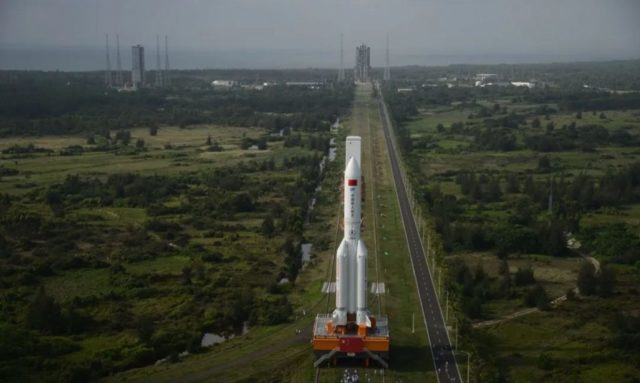The Ministry of Science and Technology of the People's Republic of China (MOST) has allocated funds for the development of promising projects in the field of space exploration. One of them is the creation of a gigantic ship with a length of about several kilometers. And although such initiatives look like outright adventures, they may make sense.
According to the South China Morning Post, the National Fund of Natural Sciences of China (subordinated to MOST) has considered ten projects in total. Five of them received money — 15 million yuan (a little more than 2.3 million dollars, or about 169.3 million rubles) each. Among the selected research areas, the truly fantastic "super-large spacecraft extending for kilometers"stands out the most.
According to the official description of the project, such a device will become strategically important for the future development of resources in space, the study of the Universe and a long stay in orbit (obviously, a person). Naturally, to build a structure of such dimensions, a huge number of launches will be required. Therefore, among the key tasks of the project is to reduce the mass of the ship and its elements. At the same time, researchers need to calculate the structural strength so that, with its colossal dimensions, the device can withstand deformations from various perturbations during orbit movement, changes in its height, as well as possible changes in its orientation.
Other details about the project of the gigantic spacecraft are not reported. It is only known that the initial study of it should be completed within the Fourteenth five-year plan, that is, by the end of 2025.
Fiction or a visionary reserve for the future?
The Chinese space program has been actively developing over the past two decades, although it has its roots in the middle of the XX century. Nevertheless, by its own efforts, the Celestial Empire was able to send the first person into space — a taikonaut-only in 2003. And already in 2012, the country demonstrated the ability to launch and operate orbital stations.
Moreover, if until quite recently there was a strong Soviet influence in the development of Chinese rockets, spacecraft and spacecraft, now there are more and more completely original developments. Take only the high-power hydrogen-oxygen engines w, installed on the already flying heavy-class rocket "Changzheng-5". Comparable units were created only in Japan, France, the USA and the USSR, and they flew actively only in American, European and Japanese carriers.

Transportation of Changzheng-5 from the vertical assembly building to the launch pad
Image source: Xinhua, CASC
There are no prerequisites for the fact that the Celestial Empire will take a leading position in cosmonautics, but the country is obviously capable of securing the second place for itself. To this end, the Chinese Communist Party invests a lot of money in the development of local commercial companies in the aerospace industry, as well as in many projects of state structures. Moreover, the exhaust from them is not always possible in the foreseeable future — this is work for the future.
Perhaps a multi-kilometer Chinese spacecraft will not appear in the XXI century. Or maybe, on the contrary, in 20-30 years humanity will master the Solar System on gigantic structures. It is impossible to say for sure, but if you start working on such projects at the expense of relatively small funding, when they "shoot", engineers will already have some experience and developments.

